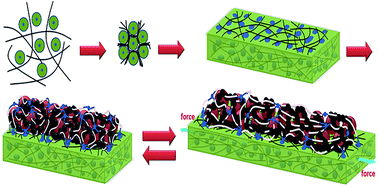High-performance stretchable electrodes prepared from elastomeric current collectors and binders†
Abstract
The preparation of high-performance stretchable electrodes is the main challenge in achieving stretchable lithium-ion batteries. The ideal solution is to use an extensible current collector with high conductivity; however, no related work has been reported yet. Commercial binders have difficulty withstanding tensile deformation and guaranteeing sufficient contact between active materials and current collectors. Here, stretchable electrodes are developed based on a poly(styrene)-b-poly(n-butyl acrylate)–poly(styrene)/single-walled carbon nanotube composite as an elastic current collector and poly(styrene)-b-poly(methyl acrylate)–poly(styrene) as an elastomeric binder. The relationship between the conductivity of the current collector and the electrode performance is revealed. It is found that when the conductivity of the stretchable current collector is higher than 10−2 S cm−1, the stretchable electrodes exhibit equivalent electrochemical performance to those prepared from rigid metal current collectors. 50% deformation can be reached which is enough for most wearable devices. With the decrease of carbon nanotube content, 80% deformation can be reached without badly sacrificing the performance. Stretchable electrodes that have been subjected to 100 stretching cycles display similar performance to the initial pre-stretched state, indicating that the electrode is stable and deforms reversibly. Based on their performance, stretchable current collectors may soon replace rigid metal ones in batteries used in stretchable electronics.



 Please wait while we load your content...
Please wait while we load your content...